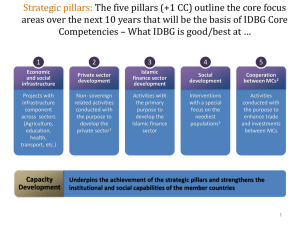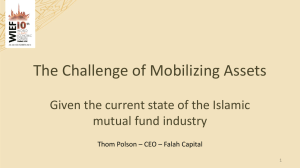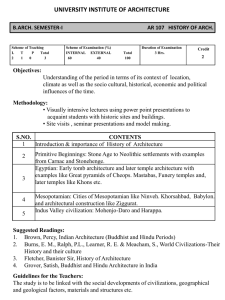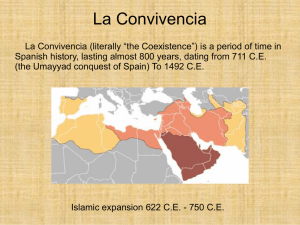Islamic Art - ArtCorpsSD
advertisement
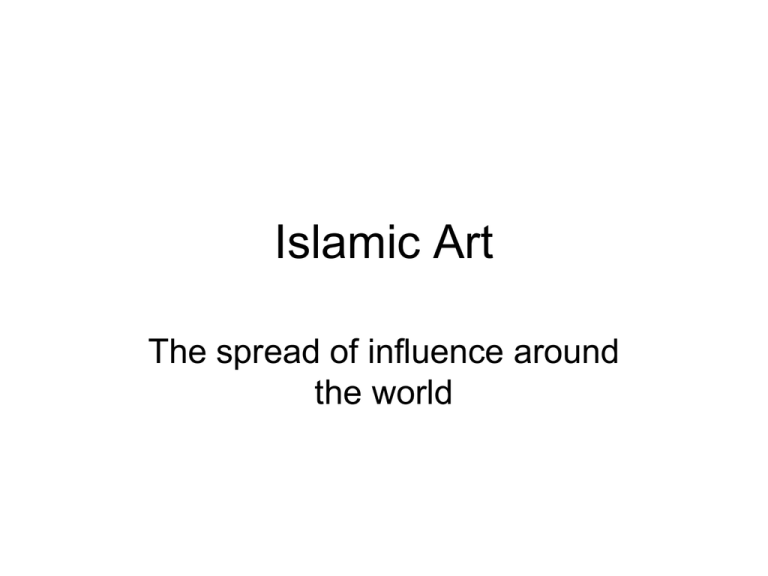
Islamic Art The spread of influence around the world • Islam has 1500 years of Art and Culture. • Islam forbids the creation of images of Muhammad in order to prevent his followers worshipping idols. There are no pictures of people or animals in mosques. Islamic art is made up of… • Geometric Pattern • Calligraphy (beautiful and ornate writing) • Ceramic work and mosaics • Weaving and textiles Geometric Patterns • A geometric pattern is one that is made up of regular lines and repeated shapes. Shapes can be reflected or rotated to create a pattern. • Islamic artists often have a small deliberate mistake in their patterns to show that they are not perfect like Allah. • Patterns and lines are unending – which represents the infinite nature of Allah The Circle • Is an important shape in Islamic religion and Islamic geometric design. It symbolizes wholeness, unity and perfection. The Triangle • The Islamic symbol of consciousness. The points symbolize the knower, the act of knowing and the known. The Square • The square symbolizes the four elements earth, air, fire and wind. Star Patterns • 8 pointed star is most common • It is made of two squares that are rotated • Since squares are considered the perfect geometric shape, the 8 pointed star represents perfection The Hexagon • Close in shape to a circle and is associated with the perfection of a circle. • It is the symbol of heaven Influences of Islamic Architecture Around the World • Taj Mahal, India • Alhambra Palace, Granada, Spain • Great Mosque of Cordoba, Spain Islamic Geometry • Islamic scholars studied and built on the mathematical ideas of the ancient Greeks • •Islamic mathematical and astrological ideas spread to Europe via the Moorish occupation of Spain. • Islamic ideas about geometry and mathematics have been very influential on European scholars over many years. Islamic influences spread by • Active trade in the Mediterranean • Islamic tradesmen arrived in Venice, Italy in 1300s. Italians copies Islamic design onto their own glasswork • Migrating craftsmen spread Islamic design from the Middle East to North Africa, India, southern Italy, and Spain. • Textiles were easy to fold and carry and helped spread the influence of Islamic design Islamic Influences in Modern Times • The repeating patterns and lines of Islamic art continued to influence European artists in the 19th and 20th centuries
